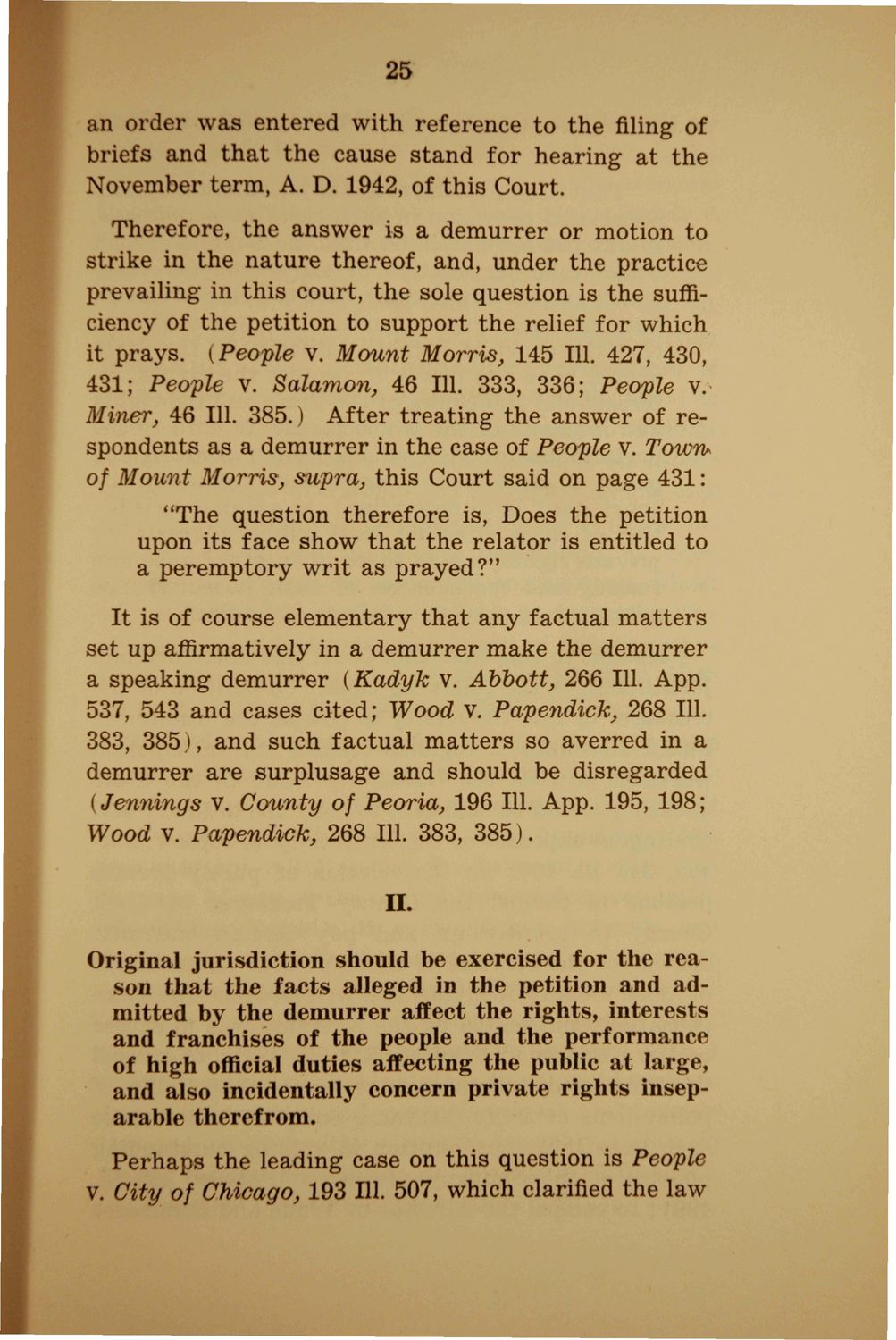| |
| |
Caption: Booklet - UI Charter of Freedom (1942)
This is a reduced-resolution page image for fast online browsing.

EXTRACTED TEXT FROM PAGE:
25 an order was entered with reference to the filing of briefs and that the cause stand for hearing at the November term, A. D. 1942, of this Court. Therefore, the answer is a demurrer or motion to strike in the nature thereof, and, under the practice prevailing in this court, the sole question is the sufficiency of the petition to support the relief for which it prays. {People v. Mount Morris, 145 111. 427, 430, 431; People v. Salamon, 46 111. 333, 336; People v. Miner, 46 111. 385.) After treating the answer of respondents as a demurrer in the case of People v. Town* of Mount Morris, supra, this Court said on page 431: "The question therefore is, Does the petition upon its face show that the relator is entitled to a peremptory writ as prayed ?" It is of course elementary that any factual matters set up affirmatively in a demurrer make the demurrer a speaking demurrer {Kadyk v. Abbott, 266 111. App. 537, 543 and cases cited; Wood v. Papendick, 268 111. 383, 385), and such factual matters so averred in a demurrer are surplusage and should be disregarded {Jennings v. County of Peoria, 196 111. App. 195, 198; Wood v. Papendick, 268 111. 383, 385). II. Original jurisdiction should be exercised for the reason that the facts alleged in the petition and admitted by the demurrer affect the rights, interests and franchises of the people and the performance of high official duties affecting the public at large, and also incidentally concern private rights inseparable therefrom. Perhaps the leading case on this question is People v. City of Chicago, 193 111. 507, which clarified the law
| |